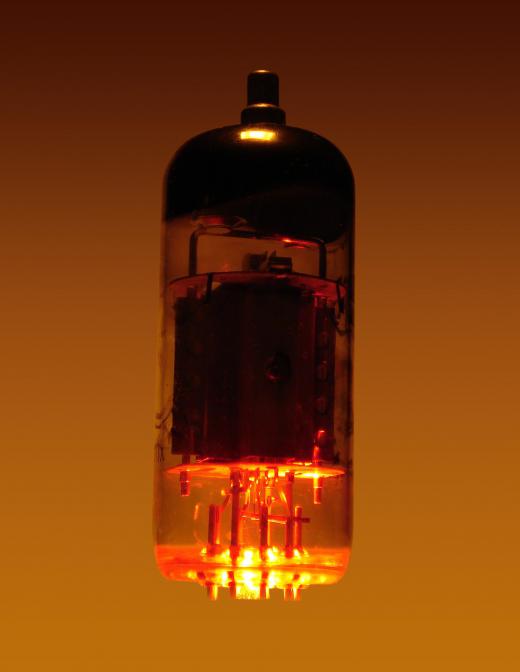What Is an Electron Beam?
An electron beam (e-beam) is a controlled stream of negatively-charged electrons that are propelled at a high rate of speed. The most common low intensity e-beam is the cathode ray tube (CRT) used in televisions and computer monitors. A high intensity electron beam may also cut metal or heat and fuse different pieces of metal in a process called electron beam welding. E-beam technology can be used to fabricate precision parts for use in the aeronautics and aerospace industries as well as sterilize medical devices, pharmaceutical materials, food, and even mail.
With electron beam welding, a high-intensity stream of concentrated electrons is directed onto the surface of a material like steel or titanium. The electrons in the welding beam are accelerated to move at between 30 to 70 percent the speed of light, providing the energy to heat and melt the metal. The benefits of e-beam welding are the preservation of a vacuum, a narrow weld zone, and the absence of the need for a filler material to fill the weld. The beam heats the pieces and combines them together to form an airtight seal. This type of welding has some downsides, however, including the production of x-rays, high preparation costs, and high equipment cost.

Electron beam free form fabrication (EBF3) is a layer-additive process that can fabricate a part from raw materials. The process utilizes a high intensity electron beam to melt and rearrange steel, titanium or other metal into a ready-to-use part. This ability to create parts and tools on demand would save a great deal of time in space, eliminating the need for costly launches to ferry heavy parts or tools. The EBF3 technology is being further developed by several companies in the aerospace industry and, in 2011, is being used in the fabrication of the F-35 Joint Strike Fighter.
Bioreduction is a process made possible by the use of precision-controlled electron beams to reduce or eliminate microbial organisms without the use of toxic chemicals. In the shipping and mailing industries, high-energy e-beams are streamed onto and through letters, packets, envelopes, boxes, and other shipping containers. The e-beam irradiates the unopened contents of the containers killing micro-organisms. Some foods, like salad-in-a-bag, which is ready to eat without washing, have been irradiated using an e-beam before they are shipped to local supermarkets. This eliminates the need for additives that could affect the taste or viability of the food.
Medical supplies and pharmaceuticals can also be irradiated with a high-energy electron beam, effectively sterilizing them. A computer program directs the exact amount of energy needed to sterilize these items. The electrons kill microbes and destroy vital molecules through an indirect chemical reaction caused by the e-beam radiation. Medical supplies, parts and devices can be irradiated while still in their unopened containers. The process and the resulting sterilization is similar to the gamma radiation process but with less material degradation in pharmaceuticals.
AS FEATURED ON:
AS FEATURED ON:











Discuss this Article
Post your comments